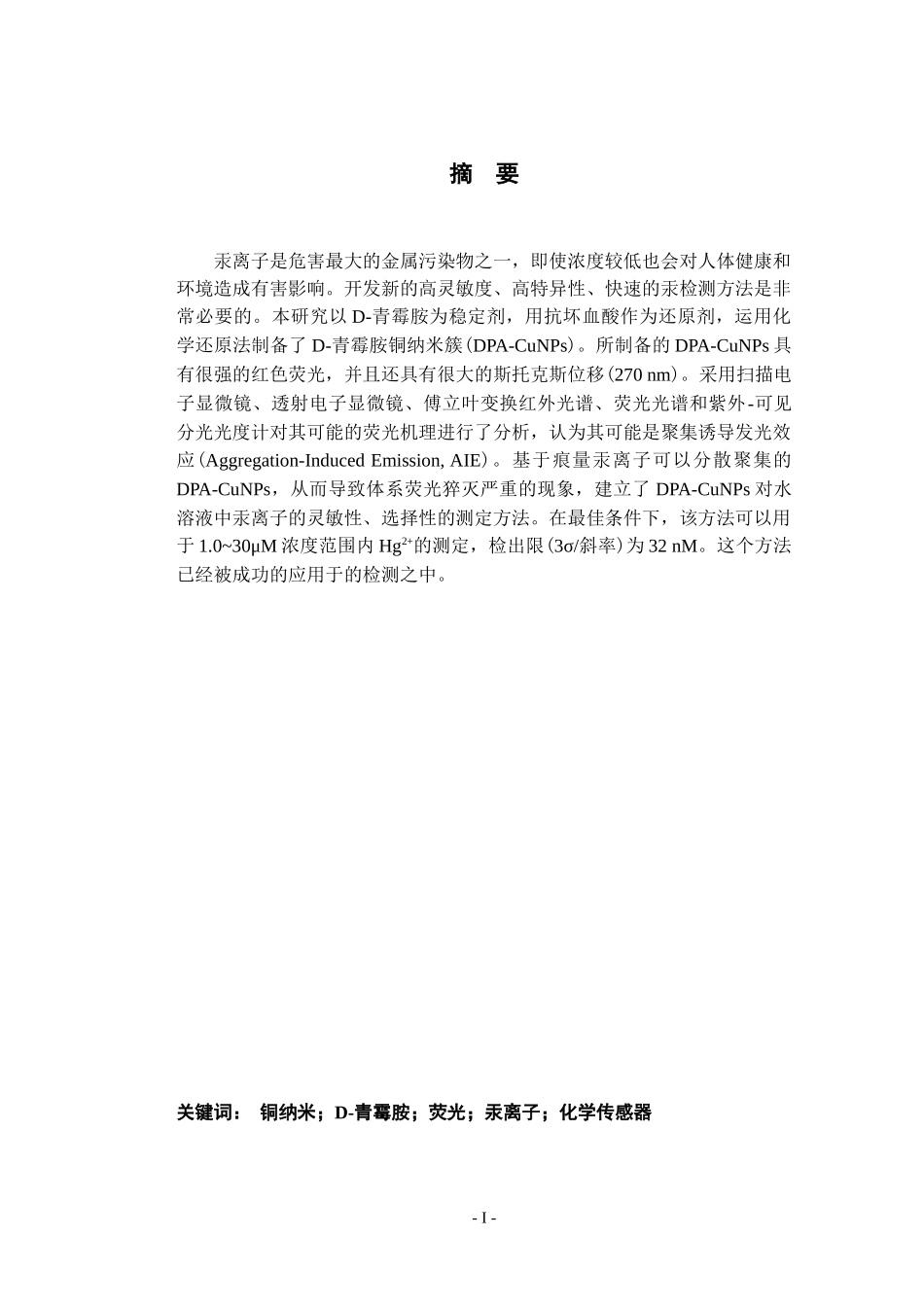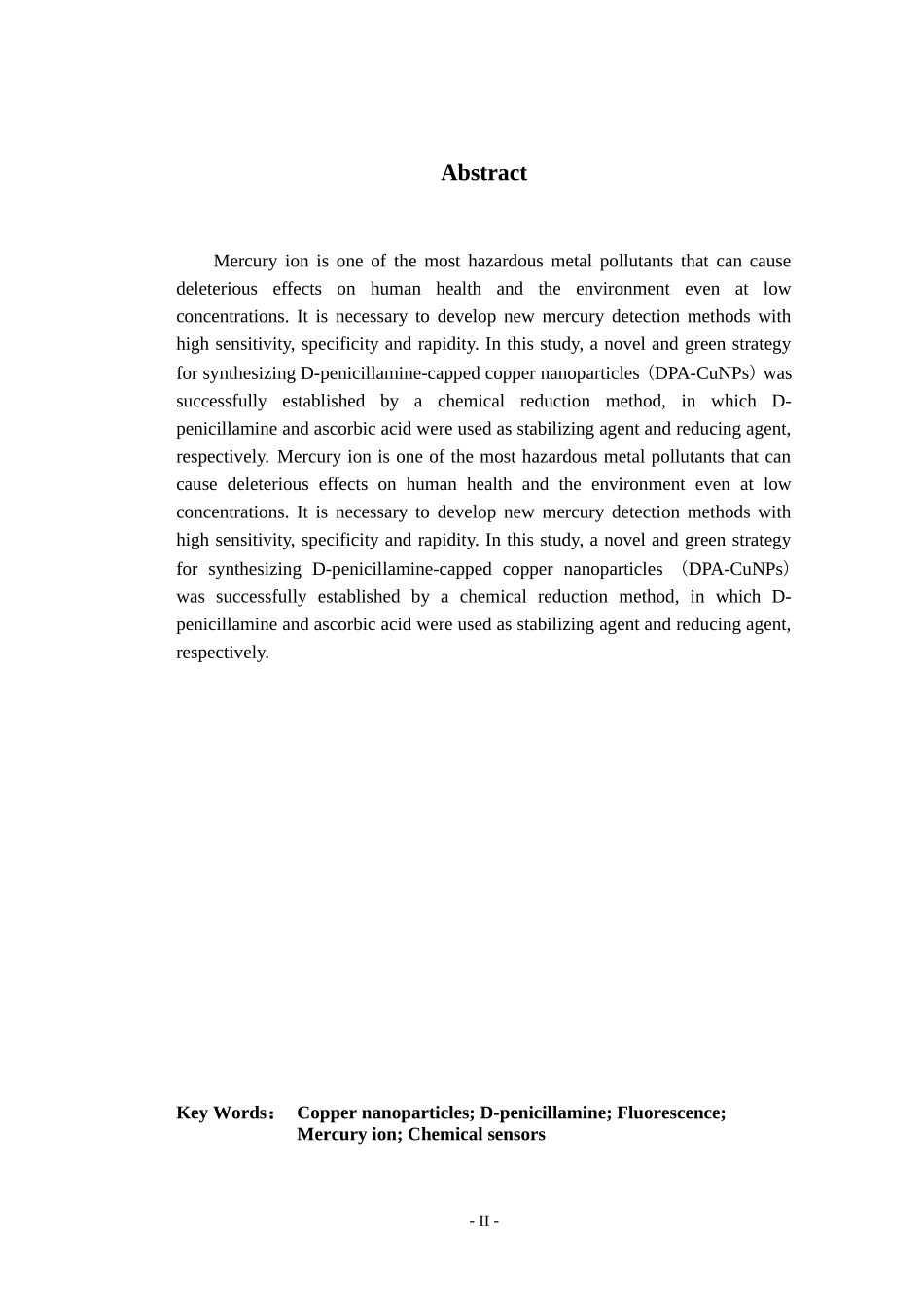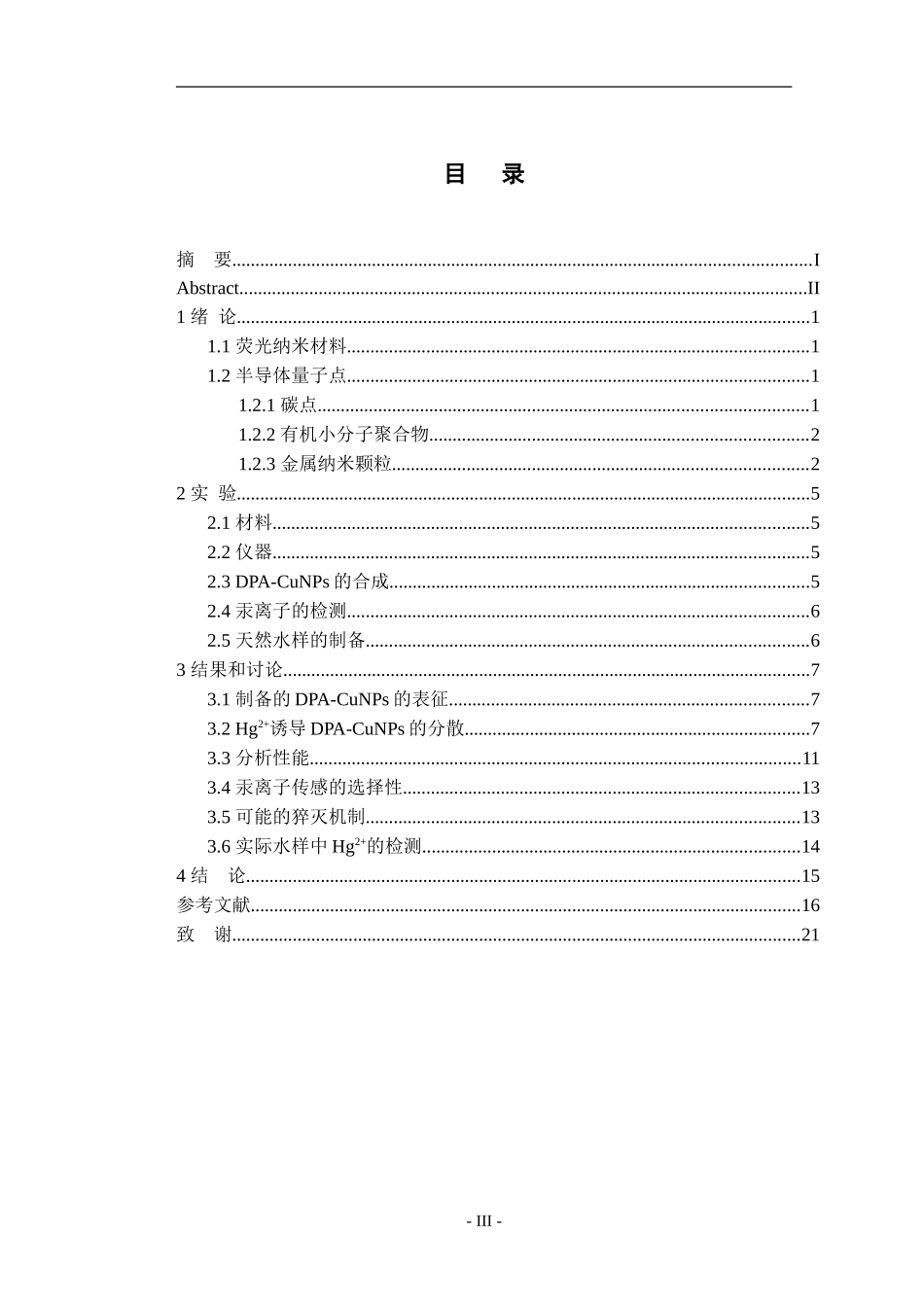摘 要汞离子是危害最大的金属污染物之一,即使浓度较低也会对人体健康和环境造成有害影响。开发新的高灵敏度、高特异性、快速的汞检测方法是非常必要的。本研究以 D-青霉胺为稳定剂,用抗坏血酸作为还原剂,运用化学还原法制备了 D-青霉胺铜纳米簇(DPA-CuNPs)。所制备的 DPA-CuNPs 具有很强的红色荧光,并且还具有很大的斯托克斯位移(270 nm)。采用扫描电子显微镜、透射电子显微镜、傅立叶变换红外光谱、荧光光谱和紫外-可见分光光度计对其可能的荧光机理进行了分析,认为其可能是聚集诱导发光效应(Aggregation-Induced Emission, AIE)。基于痕量汞离子可以分散聚集的DPA-CuNPs,从而导致体系荧光猝灭严重的现象,建立了 DPA-CuNPs 对水溶液中汞离子的灵敏性、选择性的测定方法。在最佳条件下,该方法可以用于 1.0~30μM 浓度范围内 Hg2+的测定,检出限(3σ/斜率)为 32 nM。这个方法已经被成功的应用于的检测之中。- I -关键词: 铜纳米;D-青霉胺;荧光;汞离子;化学传感器AbstractMercury ion is one of the most hazardous metal pollutants that can cause deleterious effects on human health and the environment even at low concentrations. It is necessary to develop new mercury detection methods with high sensitivity, specificity and rapidity. In this study, a novel and green strategy for synthesizing D-penicillamine-capped copper nanoparticles (DPA-CuNPs) was successfully established by a chemical reduction method, in which D-penicillamine and ascorbic acid were used as stabilizing agent and reducing agent, respectively. Mercury ion is one of the most hazardous metal pollutants that can cause deleterious effects on human health and the environment even at low concentrations. It is necessary to develop new mercury detection methods with high sensitivity, specificity and rapidity. In this study, a novel and green strategy for synthesizing D-penicillamine-capped copper nanoparticles (DPA-CuNPs) was successfully established by a chemical reduction method, in which D-penicillamine and ...


